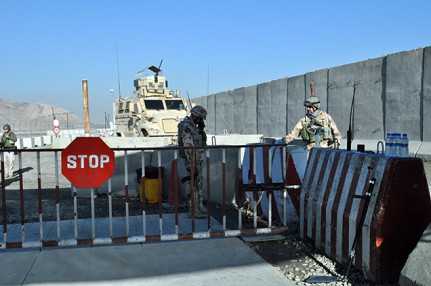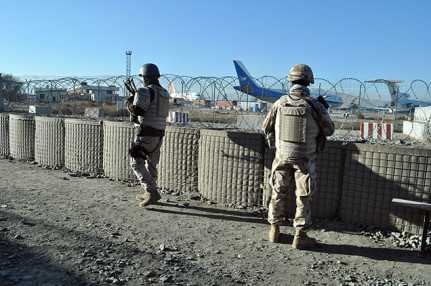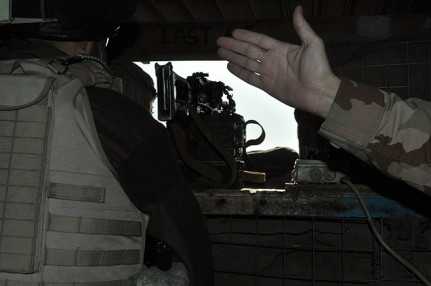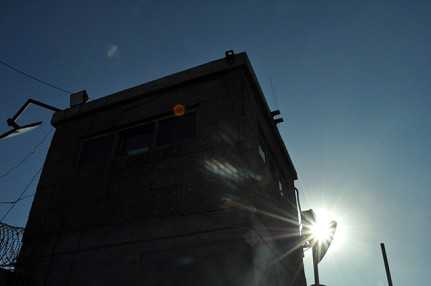Challenges at Kabul International Airport
Szöveg: Anikó Farkas – 1st Lt. Balázs Iványi | 2012. december 6. 10:07It was not until the morning of the second day of the journey that those traveling to Afghanistan for the first time in our group started to feel the real weight of arriving in a war zone, an area of operations. Reporting from Kabul.
The reading on the scales could be the nightmare of all those wanting to lose weight, because the Kevlar vest alone tipped the scales at 24 kilograms.

The destination on this day was Kabul. We flew there aboard a C–160 aircraft whose small space and instability presented our group with the first real challenge. However, the brilliant December sunshine receiving us at the military terminal of Kabul International Airport (KAIA) amply compensated for the strains of the journey. After receiving a short briefing from the operations chief of the Hungarian contingent deployed here and having a substantial lunch we faced the second challenge – or at least the civilian participants like the writer of this article did so – namely, a nearly three-hour excursion in Kevlar vests and helmets to the main posts of the Hungarian Force Protection Group.
Security in Hungarian
While being shown around, we learnt that if you want to enter the military airport, you are strongly advised to give your exact personal details and to have all necessary papers ready, or else the Afghans operating the external preliminary checkpoints will spot you and turn you back. As soon as you got through them, you are on the “sovereign territory" of Hungarian soldiers: you are supposed to present your papers again at the first Hungarian checkpoint and go through security.
Some vehicles need to go through a scanner to enter, while other vehicles are searched with mirrors before their safe entrance. There are some jammer-equipped vehicles standing by around the gates – they are there to prevent the potential detonation of a radio-controlled improvised explosive device (RCIED).

Col. László Benda, the Force Protection Group Commander of Hungarian and Portuguese troops and the commander of ground defence (coordinating the activity of around 600 men in this position), told us that over the past two months, since the Hungarian soldiers assumed Force Protection duties at the airport, they have reviewed the former operating procedures, and the lessons learned. Taking these into consideration, they have changed the defence system of the airport, so it has become much more secure than before.
Increasing presence
The tightened security measures are needed indeed, as the number of insurgent attacks against military installations has recently increased in the whole area of Afghanistan. The sources of biggest danger are the so-called green on blue attacks, when the insurgents put on the uniform of a coalition force or the Afghan National Army and infiltrate into the guarded areas where they commit acts of terrorism.
The main sources of danger in Kabul are the suicide bombers and the incoming rockets. The main targets of these free rockets – mostly launched at random rather than by precise targeting – are the government buildings in the city. However, in some instances during the two-month presence of the Hungarian troops here, these rockets hit the area of the base. No Hungarians were injured in these attacks.

Kabul is the fifth fastest growing city in the world, which is reflected in the traffic of the airport too. Most aircraft in the country land and take off here, and the airport has the highest freight volume as well. And traffic is still on the increase due to the preparations for the withdrawal – the population of the airport alone has grown by 350 per cent since 2009.
Currently more than 5,000 personnel (from 36 nations, of which ten are not NATO members) are serving at KAIA which has a daily passenger volume of 800.

At the next stage of our journey to Afghanistan, we will report on the activities of the Hungarian Air Advisory Team and the Logistic Mentor Team.
Photos by the author